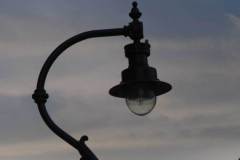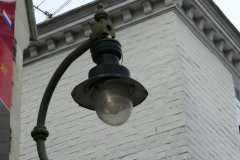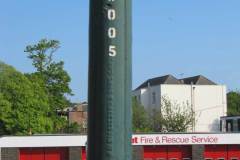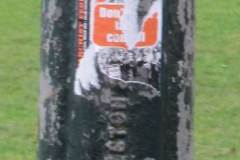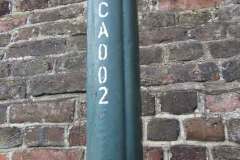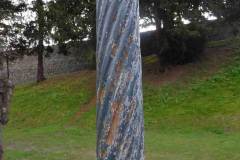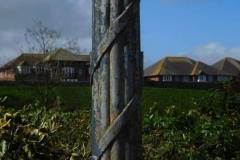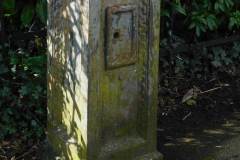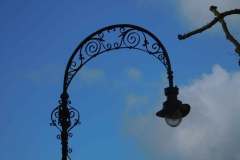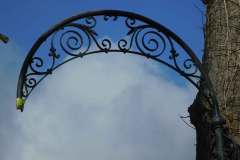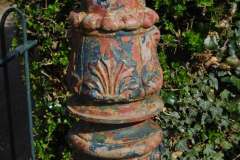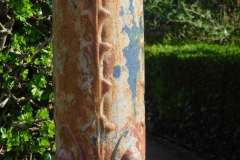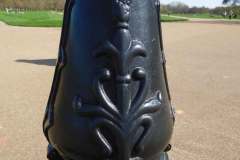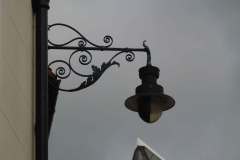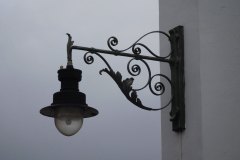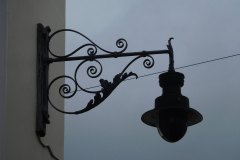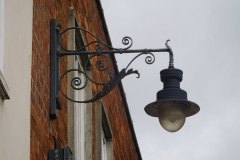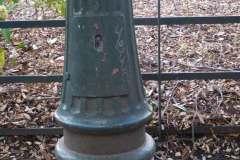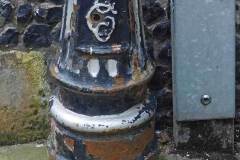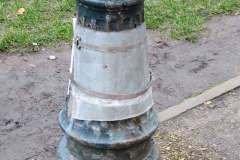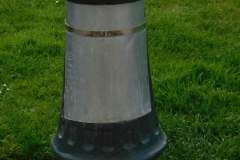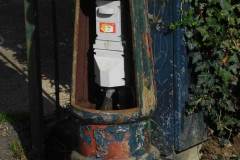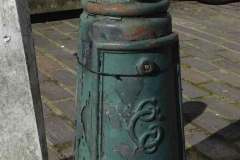The Biggleston company supplied lamp posts for Canterbury for nearly 130 years before closure of the business in 1963. These supplied gas light to the city and then (after 1899) electric lighting. The following examples of surviving posts have been chosen to illustrate the main Biggleston features.
The most prominent feature of a ‘Biggleston-style’ post is the graceful ‘swan neck’ that holds the lamp. Here two examples have been selected from over 200 that survive. We are uncertain how many of these were made by the Biggleston company itself – since 1963 replacement lamps have been made by other foundries.
A small number of early posts bear the Biggleston name. The number of named posts falls year by year as old named posts are damaged and replaced by new posts of a similar style.
The posts themselves have undergone changes over the years. Some of our examples (the spiral and bundled reeds) are more fancy than any that followed – for some this raises doubts on whether they actually came from the Bigglestone works?
Decorative features are also worth a look. These include decorated arches and palmette and sprocket motifs.
Comparison with other foundries is instructive. It is not difficult to find both the palmettes and sprockets used in metal work in other cites, some heavily stylized – the example here is from a Hyde Park lamp post which manages to combine both.
In many Canterbury streets the lamp is fixed to a wall by ornate wall brackets. The decoration on these is similar to that used for the decorated arches above. Many of the lamp glasses are blacked out on one side, to avoid bright light shining into domestic windows.
Covers to the electic boxes at the foot of each lamp have changed in size and design over the years – no doubt in part due to increases in power and complexity of the electrical systems. These following examples are taken mainly from Dane John, but similar cases can be found across the city.
The earliest covers (Images 1 and 2) were much smaller in size than those that followed. Broken covers or cover fittings has resulted in makeshift replacements for many lamp posts (Images 3 and 4).
Unsurprisingly, some end up with no cover at all (Image 5). Note introduction of the CCC motif of the City Council on all modern covers (Image 6).
For information on two related topics, the ESLA company and the presence of foundry markers, use the navigation buttons below:

